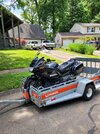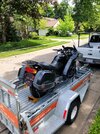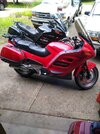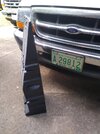1morebike
Site Supporter
Hello all,
I'm picking up a rather forlorn '98 ST this weekend. I reserved a U-haul motorcycle trailer with ample tie down points and front wheel chock. I'm uncertain about properly securing the bike and don't want to find out the hard way that I didn't do it right. I've been reading some threads here with photos showing ties going up inside the fairing with the fork, just not sure of the best way to route my ratchet straps through.
I was thinking of routing behind the 1/2" tubes on each side and in the middle/front of the head tube (fairing/radiator supports?) then having the straps cross before attaching to the anchor points of the trailer. Or should I just wrap around the fork tubes ? I'm trying to articulate as best I can what I'm trying to do. This bike is much more challenging to secure than the old GS550 I used to have. Not the best photos attached, but you folks that have done it before might see what I'm thinking. I'll be traveling about 80 miles one way and will take the byways, with no intention to go much more than 55 mph (That is not the strap I'll be using BTW)
I'm picking up a rather forlorn '98 ST this weekend. I reserved a U-haul motorcycle trailer with ample tie down points and front wheel chock. I'm uncertain about properly securing the bike and don't want to find out the hard way that I didn't do it right. I've been reading some threads here with photos showing ties going up inside the fairing with the fork, just not sure of the best way to route my ratchet straps through.
I was thinking of routing behind the 1/2" tubes on each side and in the middle/front of the head tube (fairing/radiator supports?) then having the straps cross before attaching to the anchor points of the trailer. Or should I just wrap around the fork tubes ? I'm trying to articulate as best I can what I'm trying to do. This bike is much more challenging to secure than the old GS550 I used to have. Not the best photos attached, but you folks that have done it before might see what I'm thinking. I'll be traveling about 80 miles one way and will take the byways, with no intention to go much more than 55 mph (That is not the strap I'll be using BTW)

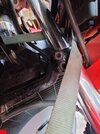
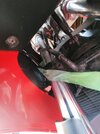
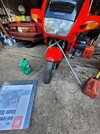


 I'm rebuilding my trailer right now.
I'm rebuilding my trailer right now.

